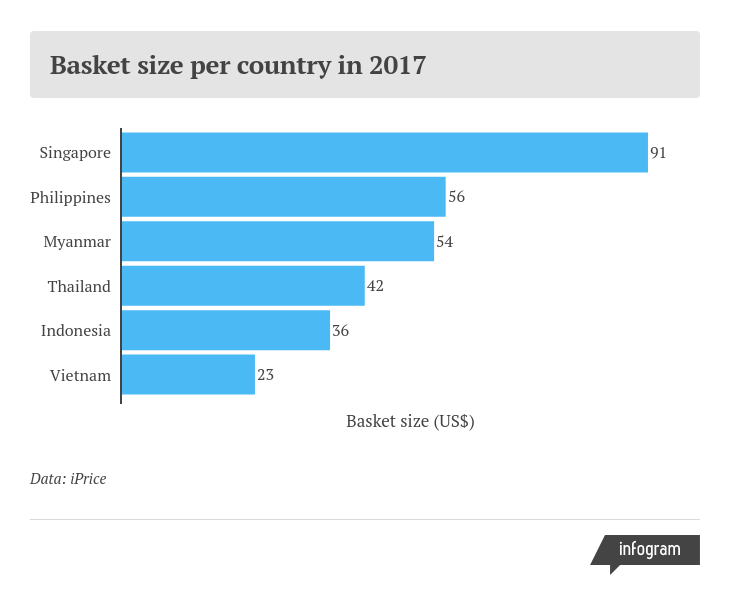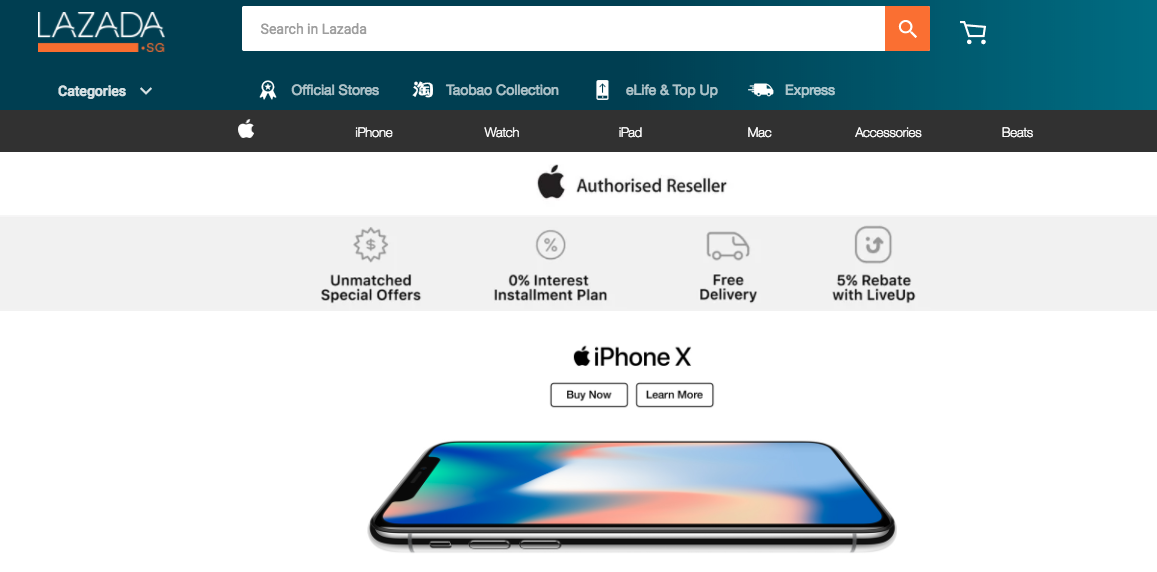
Photo credit: 123RF
Every day, ecommerce marketplaces engage in a fencing match. Contenders thrust and parry with their pricing algorithms to undercut one another. Larger sharks advance, applying sharp discounts to their products to bleed rival minnows dry.
Beyond the theatrics of giant marketplaces, however, exists a parallel universe of niche ecommerce companies that aren’t just surviving, but thriving. It is a sign that opportunities still exist in little-seen corners of Southeast Asia.
Dramatic flair
In Vietnam, Loic Gautier is plotting his next move. He is the founder and CEO of Leflair, a website that sells branded goods at a steep discount to upper-middle class consumers.
Business has been brisk. Its sales have been growing at 10 percent every month, resulting in the figure doubling in 2017 compared to the previous year. Gautier shares more numbers:
- Average customer spend: US$80
- Monthly visits: 1 million
- Annualized revenue: more than US$10 million, achieved late last year.
- Funding raised from investors: US$5 million
- Marketing spend: around 10 percent of revenue.
While these are not bad for a three-year-old business that serves only Vietnamese consumers, any VC-funded business can put their top line on steroids by letting its marketing machine loose and ignoring unit economics. But not Leflair, says Gautier.
“It’s considerably cheaper to promote a brand that everybody knows – especially when we sell it at 50 percent of retail price,” he tells Tech in Asia.
Vietnam is not so scary anymore
The era of startups in Southeast Asian ecommerce has seemingly ended. As Amazon and Alibaba pour their unlimited resources into the region, entrepreneurs starting their own marketplace today may be signing their bankruptcy filing.
But for companies that entered the ring a few years ago, good times may lie ahead. There is plenty of room for growth: Southeast Asia’s ecommerce market is still slightly behind India, and even further behind China.
Development levels vary even within Southeast Asia, according to a report by price comparison site iPrice, which compiles anonymized data from ecommerce sites like Lazada.
Singapore is a tiny market but the leader in basket size. Meanwhile, Vietnam has a large market but trails its neighbors in basket size and credit card usage.

“Vietnam looks much scarier for investors. There’s much less funding going into the country,” observes Gautier, who nonetheless believed enough in the country’s potential to set up in Ho Chi Minh City.
As for Indonesia, Gautier thinks it has become saturated. “People started getting excited three years ago about going to Indonesia. But right now, they realize that doing business there is awful. Customer acquisition costs are so high.”
Indeed, Vietnam may be heating up. Peer-to-peer ecommerce marketplace Lozi, which has millions of registered users, raised a round of funding late last year from Singapore-based investor Rekanext Capital Partners.
Then, Chinese ecommerce giant JD muscled in with an investment in Vietnamese counterpart Tiki.vn, one of the top dogs in the country. Expect more consolidation to come.
Southeast Asia’s ecommerce ocean
Geography is one way to carve a niche; business model is another. Previously a business development manager at Lazada, Gautier saw firsthand the weaknesses of online marketplaces:
- Premium brands spend millions on building their name. As such, they do not want to devalue their brand by listing products in marketplaces, which mostly sell goods that are priced below US$10.
- To list items on a marketplace, companies often need to build an entire ecommerce team.
- Premium merchants often dislike marketplaces because they sell gray market products that eat into their revenue. This happens because marketplaces collect a fee from every transaction and therefore are not incentivized to remove gray market goods.
Leflair’s flash sales approach addresses these gripes. The company works directly with brands or their official distributors to offload off-season items at a steep discount. Merchants simply hand off their goods to Leflair, which does the rest.
Flash sales can be potentially viable in Southeast Asia, though it has some ways to go before reaching the billion-dollar heights of VIP.com in China or Vente-Privee in France.
Singapore’s Reebonz, a luxury goods flash sales pioneer founded in 2009, made a tidy US$132 million in revenue and was US$14 million shy of profitability in 2016, according to its financial statement. Although its revenue grew by only one percent year-on-year, it slashed its losses by three-quarters.
However, across the pond in Indonesia, the numbers of flash sales site VIP Plaza look less rosy, reveals the 2016 financial statement for its Singapore entity, which owns subsidiaries in Indonesia and Malaysia:
- Revenue: US$413,000
- Loss: US$3.1 million
- Marketing cost: US$1.3 million
Neither Reebonz nor VIP Plaza responded to Tech in Asia’s questions regarding their finances.
Looking beyond flash sales, other business models are also vying for their time under the sun.
- Peer-to-peer marketplace Carousell is the top shopping app on iOS in Singapore but has only justed started monetizing.
- End-to-end ecommerce businesses are relatively small but growing fast, with NSI Ventures backing a couple of them recently: Grain grew its revenue by almost four times while Love Bonito’s doubled.
- Mobile-centric fashion marketplaces are taking off, writes Sheji Ho from aCommerce, with Singapore’s Zilingo leading the pack with a US$17 million fundraise which involved top-tier VC firm Sequoia.
This is just the tip of the iceberg. Some ecommerce startups, like the above-mentioned iPrice and cashback reward program Shopback, benefit directly from marketplaces. Both are growing fast. According to SimilarWeb, iPrice’s monthly visits grew almost five times in two years. Meanwhile, Shopback raised a substantial US$25 million in funding.
“Unless you have billions to invest in fighting on the same battleground as Lazada, Shopee, or JD, you need to compete on a different battleground,” says Matteo Sutto, senior vice-president of growth at iPrice.
In the US, online personal styling service Stitch Fix has withstood Amazon successfully by providing an entirely different shopping experience. The listed company made close to a billion US dollars in 2017.
The empires strike back

Apple’s official store on Lazada
Even as startups press on, the giants are not sitting still. Taking a page from Alibaba and JD, Lazada is working to eliminate the perceived weaknesses of marketplaces.
For instance, Lazada is expanding the suite of tools for merchants to include fulfillment, store design, and local language translation. The company also works with well-known brands like tech leaders Apple and Samsung as well as beauty specialists Estee Lauder and Laneige.
It is giving premium brands special treatment as well. “Through the Official Store concept on Lazada, brands are presenting their products to shoppers in a way that is consistent with their unique brand identity and image,” a spokesperson tells Tech in Asia.
The ecommerce tug-of-war continues.
This post Southeast Asia’s ecommerce startups thrive under giant marketplaces’ long shadow appeared first on Tech in Asia.
from Tech in Asia https://www.techinasia.com/southeast-asia-ecommerce-startups-giants
via IFTTT
No comments:
Post a Comment